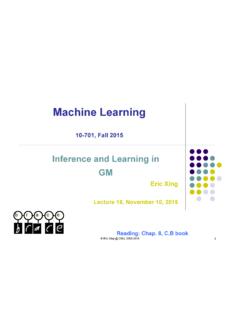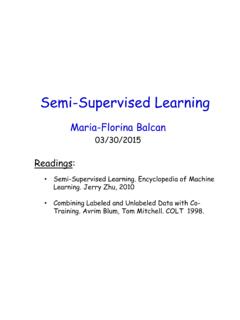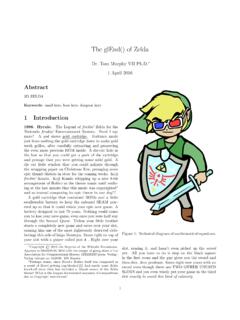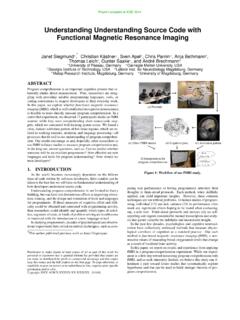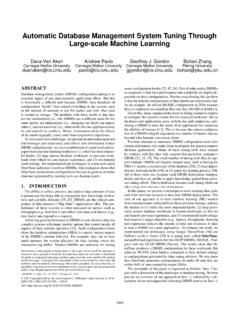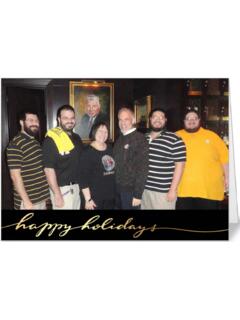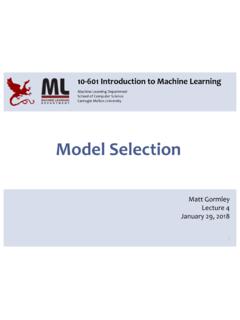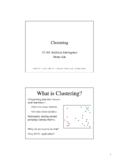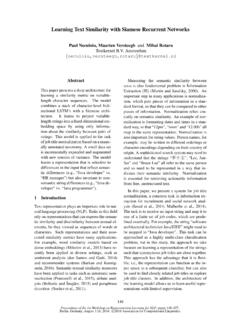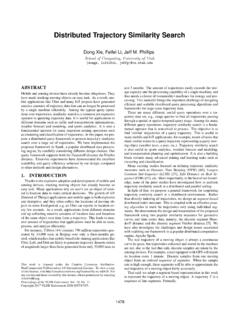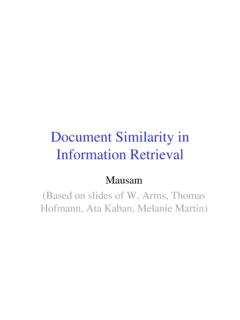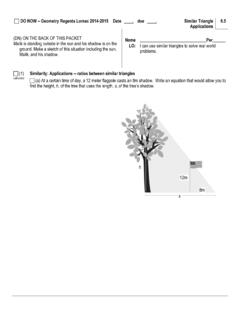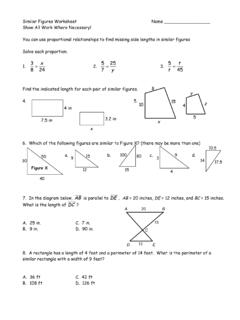Transcription of Algorithms for Graph Similarity and Subgraph Matching
1 Algorithms for Graph Similarityand Subgraph MatchingDanai KoutraComputer Science DepartmentCarnegie Mellon ParikhMachine Learning DepartmentCarnegie Mellon RamdasMachine Learning DepartmentCarnegie Mellon XiangMachine Learning DepartmentCarnegie Mellon 4, 2011 AbstractWe deal with two independent but related problems, those of Graph Similarity and subgraphmatching, which are both important practical problems useful in several fields of science, engineer-ing and data analysis. For the problem of Graph Similarity , we develop and test a new frameworkfor solving the problem using belief propagation and related ideas.
2 For the Subgraph matchingproblem, we develop a new algorithm based on existing techniques in the bioinformatics and datamining literature, which uncover periodic or infrequent matchings. We make substantial progresscompared to the existing methods for both Problem Definitions and Statement of Graph SimilarityProblem 11 Given:two graphsG1(n1,e1)andG2(n2,e2), with possibly different number of nodes and edges, andthe mapping between the graphs :(a) an algorithm to calculate the Similarity of the two graphs, which returns (b) a measure ofsimilarity (a real number between 0 and 1) that captures intuition.
3 A) We develop a method involving belief propagation, unseen in literature, to solve thisproblem b) The method (and its fast linearized approximate version) gives extremely agreeable resultsc) Except for scalability, we know of no shortcomings of this Subgraph MatchingProblem 2 Given:a Graph time series, where there are T number of :(a) An algorithm to find approximate subgraphs that occur in a subset of the T graphs. (b) Wherethe approximate subgraphs may not occur in the majority of the time points, but in local sectionsof the time seriesInnovations:a) We develop a principled approach to selecting the important time components fromwhich subgraphs should be mined.
4 Our method is also tailored for the problem of selecting subgraphsin biological networks. For this, we use sparse PCA which has not been for this application domain. b)Scalability: Our method is both fast and scalable to real biological data (1000s of nodes). However, ithas not been demonstrated whether it can scale to extremely large networks of more than 10 000 ) The method gives results that are easy to interpret and biologically of interests intersecting with course projectAaditya may use the PhoneCall dataset for his DAP. Danai is interested in Graph Similarity and beliefpropagation for research.
5 Ankur has used tensors for his research, but in a different context. Jing hasused CODENSE before, and is interested in improving it for research purposes. None of the authorshave other course projects this following are the papers read for this course (refer to the numbering in the references section):Jing [21], [28], [22], Ankur [20], [18], [9], Aaditya [5], [26], [27], Danai [10], [14], [15].22 IntroductionGraphs arise very naturally in many situations - examples vary from the web Graph of documents, to asocial network Graph of friends, to road-map graphs of cities.
6 Over the last two decades, the field ofgraph mining has grown rapidly, not only because the number and the size of graphs has been growingexponentially (with billions of nodes and edges), but also because we want to extract much more com-plicated information from our graphs (not just evaluate static properties, but infer structure and makeaccurate predictions). This leads to challenges on several fronts - proposing meaningful metrics tocapture different notions of structure, designing Algorithms that can calculate these metrics, and finallyfinding approximations or heuristics to scale with Graph size if the original Algorithms are too slow.
7 Inthis project, we tackle several of these aspects of two very interesting and important problems, graphsimilarity and Subgraph mining, which we broadly introduce and motivate in the next few , we briefly introduce our two sample datasets (graphs), which will recur throughout this DatasetsWe call the PhoneCall datasetPC. Imagine users (indexed by phone number) being the nodes, andthere is an edge between two nodes if they spoke to each other, letting the total call duration be theweight (or its inverse) on that edge. Summing up durations over a week or month would give us severalweighted graphs on the same set of nodes.
8 The dataset consists of over340,000people in one cityusing one telephone service provider. It contains a list of all calls made from people in the networkto others in the same network over 6 months. We also have a list of SMS s sent within the network(call it datasetSMS), which we may also use. Other properties (like the distribution of call durations,anomaly detection, reciprocity, etc) of this data have already been analyzed in [2, 1, 24].We call the YeastCellCycle datasetYCC. In this setting, the genes are the nodes of each Graph andthere exists an edge between two nodes if two genes interact.
9 YCC is a sequence of graphs, one foreach of 24 time points. These graphs are generated by using Time-Varying dynamic Bayesian networksalgorithm [12] on yeast cell cycle microarray data. Thus, the graphs vary over the different phases ofthe cell cycle, resulting in different patterns for each of the first growth (G1), synthesis (S), secondgrowth and mitosis (G2M) phases. Similar to the yeast dataset, the Drosophila dataset (DP) is also aseries of graphs that vary over time. Again, genes are the nodes of each Graph and the edges representinteractions.
10 The dataset consists of 1 Graph per time point for a total of 66 time points. The graphsare generated using a kernel-reweighted logistic regression method [19]. Drosophila undergo several3stages of development which are the embryonic stage, larval stage, pupal stage, and adult stage. Thesechanging stages of development result in variations between the graphs especially during the transitiontime points. The YCC and DP datasets will be referred to as GeneInteraction (GI) of AbbreviationsPCPhoneCall datasetSMSSMS datasetYCCY east Cell Cycle datasetG1 Growth Phase of Cell CycleSSynthesis Phase of Cell CycleG2 MGrowth and Mitosis Phase of Cell CycleDPDrosophila datasetGIGene Interaction datasetsBPBelief Graph SimilarityOur setting for Graph Similarity is as follows.
